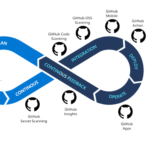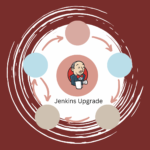Introduction: Rolling Out Change Without Rolling the Dice
Imagine launching a new feature to thousands-or millions-of users. The stakes are high: a bug could mean lost revenue, angry customers, or even a PR nightmare. But what if you could test new code with just a sliver of your audience, gather real feedback, and toggle features on or off instantly-without redeploying? Welcome to the world of canary deployments and feature flags in CI/CD pipelines.
In this guide, you’ll learn how combining these two powerful strategies can help you ship faster, safer, and smarter. We’ll break down the concepts, showcase real-world examples, walk through actionable steps, and highlight the tools and best practices you need to succeed.
Key Concepts: What Are Canary Deployments and Feature Flags?
Canary Deployments
A canary deployment is a progressive release strategy where a new version of your application is rolled out to a small subset of users before a full-scale launch. The term “canary” comes from the old practice of using canaries in coal mines to detect toxic gases-if the canary was affected, miners knew to stay away.
- Goal: Minimize risk by monitoring real user impact before a full rollout.
- How it works: Deploy the new version to a small group (e.g., 5% of users), monitor metrics, then gradually increase exposure if all goes well.
Feature Flags (Feature Toggles)
Feature flags are configuration switches that enable or disable features at runtime, without deploying new code. They allow you to control who sees what, experiment safely, and roll back instantly if issues arise.
- Goal: Decouple feature release from code deployment, enabling safer, more flexible launches.
- How it works: Wrap new features in conditional logic controlled by a flag (e.g., a config file, environment variable, or dedicated service).
Why Combine Canary Deployments with Feature Flags?
While canary deployments and feature flags are powerful on their own, combining them supercharges your release process:
- Granular control: Release features to specific user segments within a canary group.
- Rapid rollback: Instantly disable problematic features or versions without redeploying.
- Real-world validation: Gather usage data and feedback before full exposure.
- Continuous experimentation: Run A/B tests and iterate quickly with minimal risk.
Real-World Example: How Netflix Ships Features Safely
Netflix is famous for its progressive delivery culture. When rolling out a new recommendation algorithm, Netflix engineers deploy it to a tiny percentage of users using a canary deployment. Within that group, feature flags allow them to enable or disable specific algorithms for targeted cohorts. This lets them monitor performance, user engagement, and error rates in real time. If issues arise, they simply toggle the feature off-no redeploy needed.
Read more on the Netflix Tech Blog
Step-by-Step Guide: Implementing Canary Deployments with Feature Flags
-
Set Up Your CI/CD Pipeline
- Use tools like Jenkins, GitHub Actions, GitLab CI, or Azure DevOps to automate builds, tests, and deployments.
- Integrate with your cloud provider or container orchestrator (e.g., Kubernetes, AWS ECS).
-
Instrument Your Application with Feature Flags
- Choose a feature flag management tool (see recommendations below).
- Wrap new features in flag checks. For example, in Python:
if feature_flag_service.is_enabled("new_dashboard", user_id): show_new_dashboard() else: show_old_dashboard() - Define rules for targeting users (e.g., by geography, account type, or random sampling).
-
Configure Canary Deployment Strategy
- Deploy the new version to a small subset of users or servers (e.g., 5%).
- Monitor key metrics: error rates, latency, user engagement, etc.
- Gradually increase traffic to the new version if metrics are healthy.
-
Monitor and React
- Set up automated alerts for anomalies.
- If issues are detected, use your feature flag dashboard to instantly disable the problematic feature for all or affected users.
-
Full Rollout and Cleanup
- Once validated, ramp up the canary to 100% of users.
- Remove legacy code and obsolete feature flags (see best practices below).
Best Practices and Tips
- Keep feature flags short-lived: Remove them once the feature is fully rolled out and stable to avoid technical debt.
- Document flag purpose and owners: Use naming conventions and metadata to track who owns each flag and why it exists.
- Automate flag cleanup: Schedule regular reviews or use tools that detect stale flags and unused code paths.
- Monitor both application and business metrics: Don’t just look for errors-track user engagement, conversions, and other KPIs.
- Test with real-world scenarios: Simulate failures and rollbacks to ensure your process works under pressure.
Cleaning Up Legacy Feature Flags
Feature flags are powerful, but leaving old flags in your codebase can create confusion and bugs. Here’s how to manage cleanup:
- Track flag lifecycle: Each flag should have a clear creation date, owner, and planned removal date.
- Automate detection: Use static analysis tools or built-in features in flag management platforms to identify unused or always-on/off flags.
- Review regularly: Schedule monthly or quarterly reviews to prune obsolete flags.
- Remove dead code: Once a feature is fully released and stable, delete the flag and any conditional branches from your codebase.
Case Study: Martin Fowler’s guide discusses how teams at large enterprises avoid “flag rot” by integrating flag cleanup into their definition of done.
Recommended Tools for Managing Feature Flags
| Tool | Key Features | Website |
|---|---|---|
| LaunchDarkly | Enterprise-grade flag management, targeting, analytics, integrations | launchdarkly.com |
| Unleash | Open-source, self-hosted or cloud, flexible targeting, SDKs | getunleash.io |
| Flagsmith | Open-source, REST API, multi-environment support | flagsmith.com |
| ConfigCat | Simple UI, strong SDK support, affordable pricing | configcat.com |
| Split.io | Feature flagging plus experimentation and analytics | split.io |
Challenges and Solutions
-
Challenge: Flag Overload
Solution: Establish naming conventions, document flag purpose, and automate cleanup. -
Challenge: Complex Rollback Scenarios
Solution: Test rollback procedures as part of your release process. Use feature flags for instant reversals. -
Challenge: Monitoring Blind Spots
Solution: Integrate observability tools (e.g., Datadog, Prometheus, Grafana) to track both technical and business metrics. -
Challenge: Technical Debt from Stale Flags
Solution: Make flag cleanup a regular engineering task, not an afterthought.
Future Outlook: What’s Next for Progressive Delivery?
- AI-driven release automation: Machine learning models will increasingly help decide when and how to ramp up canaries based on real-time data.
- Deeper integration with observability: Feature flag platforms will tie directly into monitoring and alerting systems for faster feedback loops.
- Self-serve experimentation: Product and marketing teams-not just engineers-will use feature flag tools to run experiments and personalize user experiences.
- Edge deployments: With edge computing, canary and flag strategies will extend to globally distributed infrastructure for even finer control.
Conclusion: Ship Faster, Safer, and Smarter
Combining canary deployments with feature flags in your CI/CD pipeline is a game-changer for modern software teams. You’ll reduce risk, gather actionable insights, and deliver value to users with confidence. Start small, automate where possible, and make cleanup a habit-not an afterthought.
Ready to transform your release process? Contact us today to discuss how we can help you implement best-in-class CI/CD practices and accelerate your innovation!
Further Reading & References
- Feature Toggles (Martin Fowler)
- Feature Flags and Canary Releases (LaunchDarkly Blog)
- Automated Canary Analysis at Netflix
- Continuous Delivery (O’Reilly Book)
- Canary Releases & Feature Flags (Unleash Blog)



